Pancosma & Associates’ 2015 survey: threat of multi-mycotoxin contamination
Published: April 29, 2016
By: Pancosma S.A.
Pancosma & Associates released its annual mycotoxin survey, in partnership with Labocea, covering 1740 raw material and animal feed samples, evaluating the risk posed to livestock animals by 46 different mycotoxins, mainly in Europe. The comprehensive analysis extended beyond simply detecting contamination, to take into account the differing levels of sensitivity across various animal species. The data gathered show large variations in levels of mycotoxin contamination depending upon the specific raw material. For example, corn and wheat samples showed widely divergent contamination profiles. When analyzing complete feed, it became clear that monogastric animals were highly exposed to mycotoxins in 2015, particularly to trichothecenes type A and B.
Corn: high levels of multi-mycotoxin contamination
In 2015, corn samples in Europe were almost all contaminated with multiple types of mycotoxins (figure 1). Multi-mycotoxin contamination can create toxic synergies that decrease the sensitivity thresholds of animals to mycotoxins. Corn samples were particularly contaminated with type B trichothecenes (figure 2), such as DON, nivalenol, DOM-1 and D3G, resulting in reduced ingestion and additional daily gain (ADG), particularly in pigs, which unlike poultry are not well equipped to metabolize these types of mycotoxins. The median level of contamination in corn samples was 1145 parts per billion (ppb). Considering the fact that contamination levels of over 200 ppb represent the first threshold of danger for the most sensitive animals (sows, piglets and breeders), 76.8 % of the samples analyzed crossed this threshold, providing a cause for concern. In addition, type A trichothecenes, such as DAS, MAS, T2 and HT2 toxins, were detected in almost 40% of the samples. These mycotoxins can be harmful when ingested at levels of 20 ppb, especially in layers and breeders.
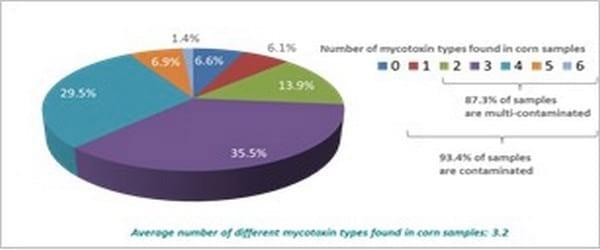
Figure 1: Number of different mycotoxin types found in corn samples.

Figure 2: Type B trichothecene contamination in corn.
Zearalenone affects mainly sows and piglets, when it is present at 50 ppb or more, and can also trigger harmful effects in layers and breeders. This level of zearalenone contamination was found in 53.2% of the corn samples analyzed, which effectively indicates that half of all the corn samples tested could have led to reduced reproductive performance in animals. If we take into account the toxic synergistic effects between zearalenone and trichothecenes, this data becomes even more alarming.
Fumonisins were detected at levels above 1000 ppb in 1 out of every 3 corn samples tested. This is considered to be the threshold of sensitivity to fumonisins in monogastrics. Fumonisins negatively impact the synthesis of sphingolipids, which are mainly present in the brain and nerve tissues. They are also mitogenic in certain cells types, and can induce lesions in some organs, as the liver, heart and the lower part of the small intestine. As a consequence, fumonisin exposure can result in lower body weight and poor performance.
Ochratoxins, ergot alkaloids, tenuazonic acids and aflatoxins were also detected, but do not represent a major risk in Europe.
Wheat: globally safe but affected by multi-mycotoxin contamination
Compared to corn samples that were of particular concern in Europe, wheat samples were found to have much lower levels of contamination. However, multi-mycotoxin contamination can still represent a threat, as almost 90% of the wheat samples were contaminated with multiple types of mycotoxins (figure 3).
The major mycotoxin types to be monitored in wheat in 2015 (figure 4), were type B trichothecenes, such as DON, nivalenol, DOM-1 and D3G. This group of mycotoxins reduces ingestion and ADG, particularly in pigs. Type B trichothecenes were found in 37.3% of the wheat samples, at a level above 200 ppb. Type A trichotehecenes, such as DAS, MAS, T2 and HT2 toxins, contaminated 20% of the wheat samples. Zearalenone, fumonisins and ergot alkaloids were also detected in wheat samples, and could have contributed to decreased reproductive performance, and reduced growth

Figure 3: Number of different mycotoxin types found in wheat samples
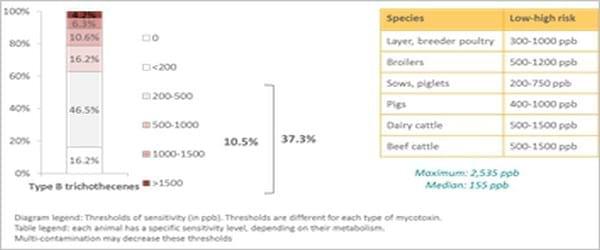
Figure 4: Type B trichothecene contamination in wheat
Poultry feed: high risk of trichothecenes type A contamination
In 2015, poultry feed was found to be particularly contaminated with both type A and B trichothecenes. Although type B trichothecenes are less harmful for poultry than pigs, as poultry are better equipped to metabolize them, they were found to be present above 300 ppb in 61.3% of poultry feed samples tested (figure 6), which could explain their reduced growth performance. The threshold level beyond which layers and breeders succumb to type B trichothecenes is 300 ppb. But the main concern was type A trichothecenes, which was found in almost one out of every 5 samples at levels above 20 ppb, the sensitivity threshold for this type of mycotoxin in layers and breeders. These mycotoxins are highly toxic for poultry and can affect feed intake and body weight. These effects could have been exacerbated by the presence of tenuazonic acids, which was found to be present at levels above 100ppb in 42% of the samples.
Zearalenone was detected in 41% of the samples at concentrations above 50 ppb, which could have impacted fertility and hatchability, in addition to decreasing the sensitivity threshold by creating synergistic toxic effects in cases of multi-mycotoxin contaminations. Ochratoxins, which are known to have a negative effect on hatchability, were not of concern this year, except in some very specific cases. The multi-mycotoxin contamination of the large majority of the poultry feed samples was alarming (figure 5).
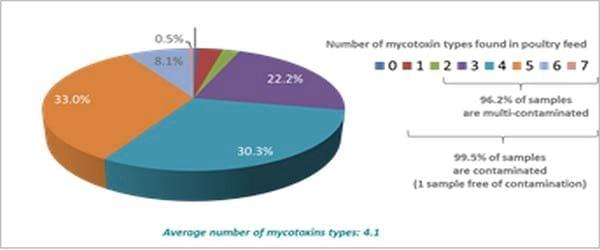
Figure 5: Number of different mycotoxin types found in poultry feed
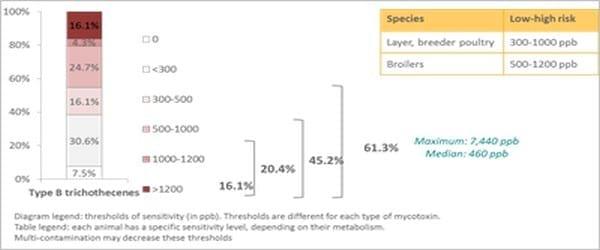
Figure 6: Type B trichothecene contamination in poultry feed
Swine feed: nearly 100% mycotoxin contamination
In the 2015 survey, mycotoxins were in all except one of the swine feed samples tested, and moreover, 93% of these samples showed multi-mycotoxin contamination, raising the level of risk (figure 7). Type B trichothecenes were of particular concern in swine feed samples (figure 8), which could explain decreased growth performance. Of all the samples tested, 58% were contaminated at levels above 200 ppb. These effects on performance may have been exacerbated by the presence of tenuazonic acids, that were also detected in swine feed.
Zearalenone was found in at least one out of five swine feed samples (figure 9), with the potential to affect fertility, resulting in reduced litter sizes, and enlarged vulvas. As zearalenone is transferred into the milk, piglets may also have enlarged vulvas.
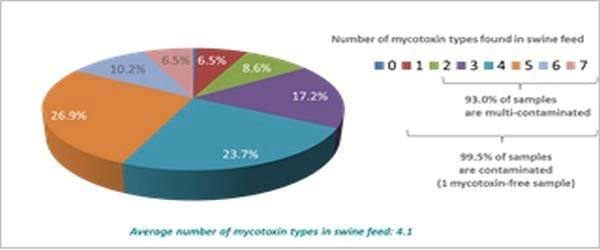
Figure 7: Number of different mycotoxin types found in swine feed

Figure 8: Type B trichothecene contamination in swine feed
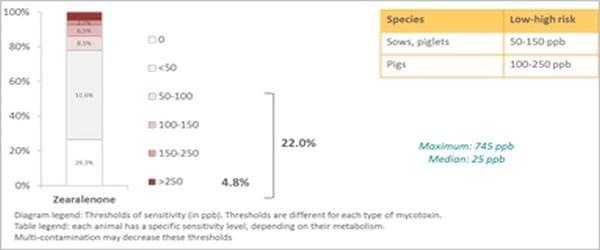
Figure 9: Zearalenone contamination in swine feed
Silages: zearalenone and type B trichothecenes of concern
In the 2015 survey, zearalenone was found to contaminate 66% of all silage samples tested (figure 11). At levels above 50 ppb, zearalenone is known to cause problems with reproduction in dairy cattle. In addition, zearalenone can be transformed into more toxic metabolites by the rumen, namely, alpha-zearalenol and beta-zearalenol.
Although the rumen can partially degrade type B trichothecenes, such as DON, the level of contamination in 2015 was especially high with 78.3% of the samples contaminated with more than 500 ppb of DON. At these levels, type B trichothecenes can disturb the rumen flora and affect ingestion of the ration. Type A trichothecenes were found in only 10% of the samples, but their presence can aggravate the toxic effect of type B trichothecenes, and they can also be transformed into more toxic metabolites, notably DAS and MAS. Finally patulin toxin was also detected in the silage samples, at levels that pose a health risk to animals.
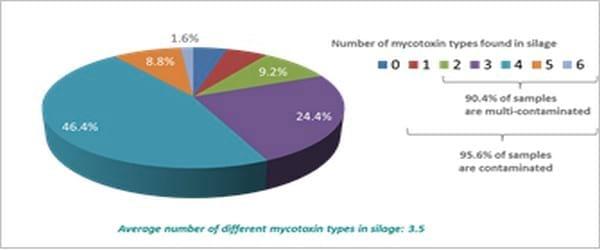
Figure 10: Number of different mycotoxin types found in silage
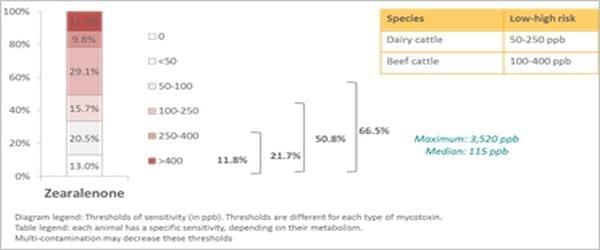
Figure 11: Zearalenone contamination in silage
Conclusion
The chief concern in 2015 remains the high levels of multi-mycotoxin contamination, particularly in corn. That’s why broken grains have to be monitored at the end of silos. Monogastric feeds, particularly pigs feeds, have to be used with caution, as approximately one out of two swine feed samples were found to be contaminated, most notably with zearalenones and type B trichothecenes. Concerning dairy, there was no specific threat of aflatoxins in milk, however, zearalenone and type B trichothecenes could pose a risk.
Contact:
1. Clémentine Oguey, Product Expert - Toxinbinders. Email: Clementine.oguey@pancosma.ch
2. Sandrine Durox, Product Manager – Toxinbinders. Email : Sandrine.durox@pancosma.ch
3. Pancosma SA, Voie des Traz 6, 1218 Le Grand Saconnex, Switzerland
Related topics
Authors:
Join to be able to comment.
Once you join Engormix, you will be able to participate in all content and forums.
* Required information
Would you like to discuss another topic? Create a new post to engage with experts in the community.
Create a postFood & Allied Group of Companies
10 de mayo de 2016
The end of silos represents a risk to the poultry. Mycotoxins is a constant threat to poultry production. It is important to add a toxin binder and a mould inhibitor in the feed in period of risks. Multi mycotoxins are also present in Soya.








